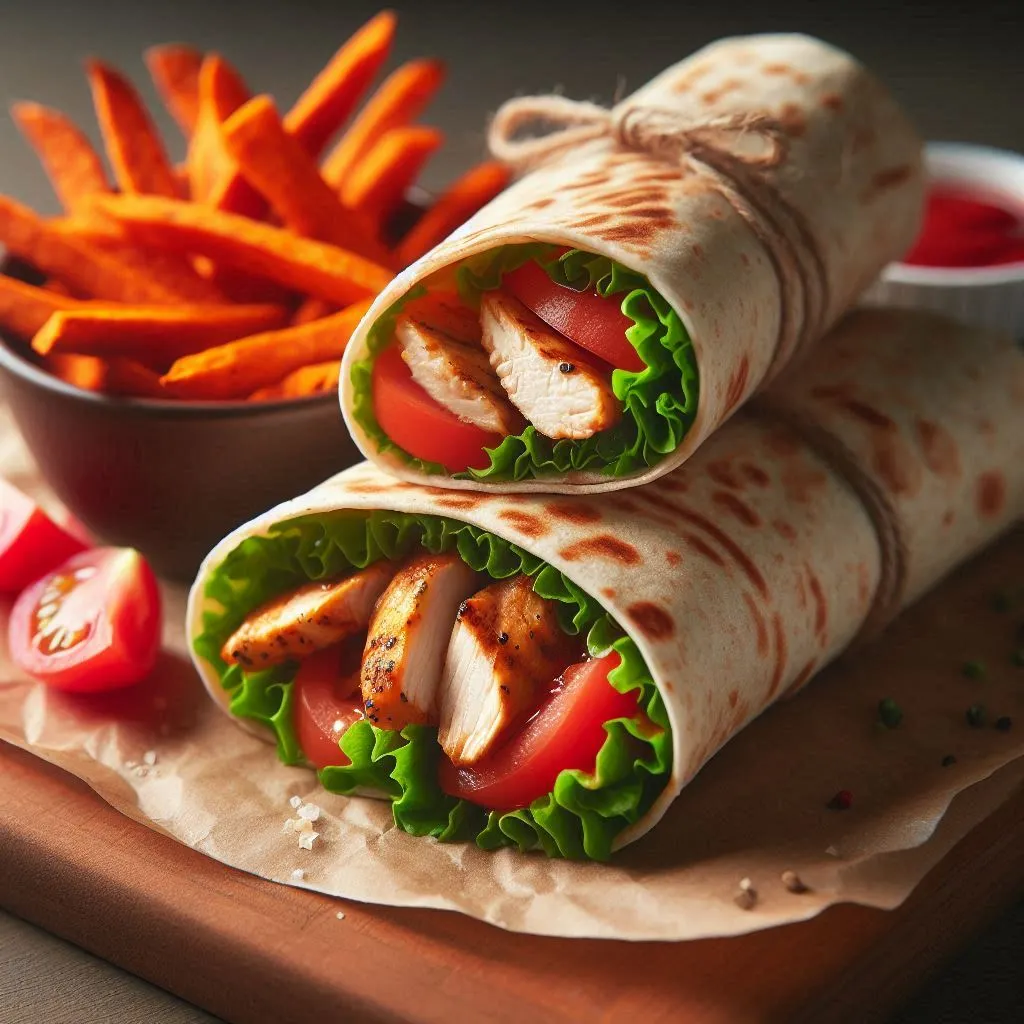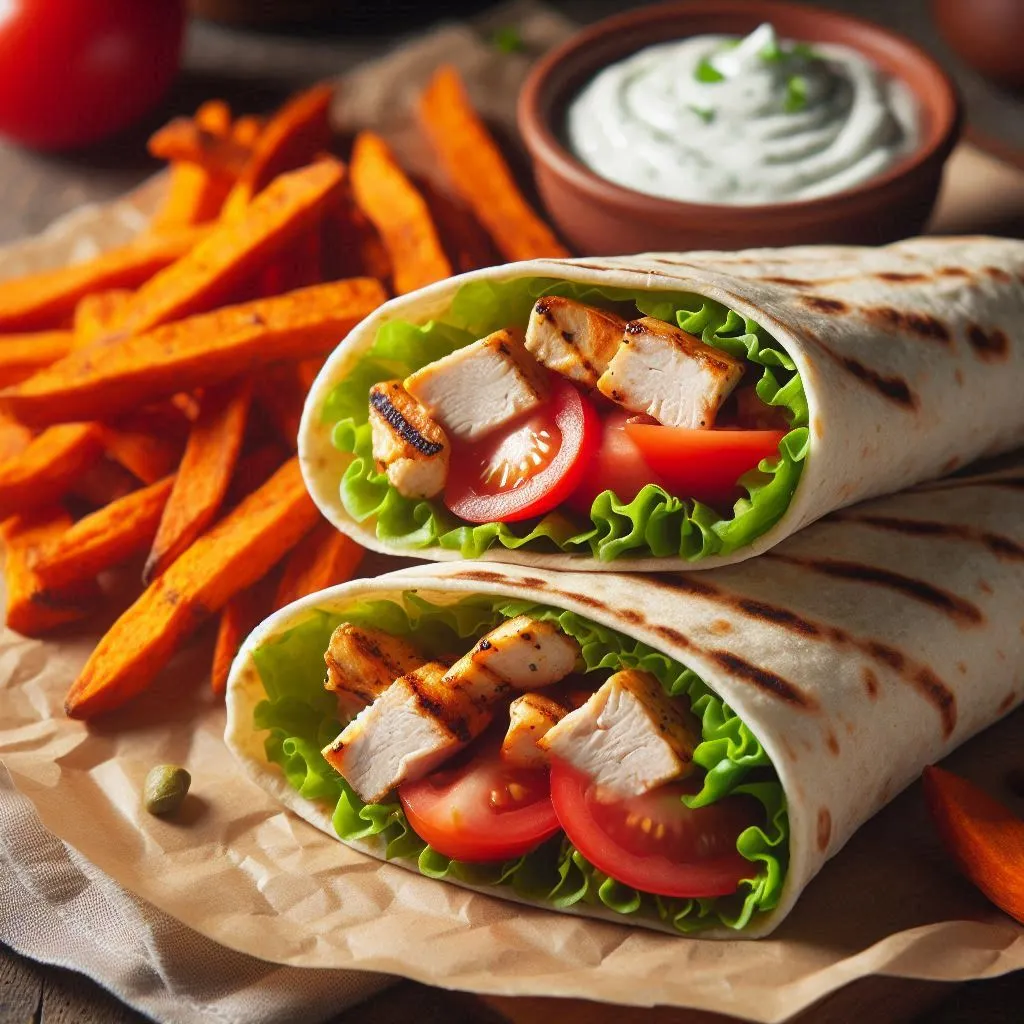
Table of Contents
Snack Wrap McDonald’s: A Deep Dive into Its History, Popularity, and Legacy
Introduction
McDonald’s Snack Wraps became a cultural phenomenon when they were first introduced in 2006. Designed as a lighter, more portable alternative to burgers, Snack Wraps quickly gained a loyal following. However, their discontinuation in 2016 left fans disappointed and craving their return. This article explores the history, rise to fame, reasons for discontinuation, and the enduring legacy of McDonald’s Snack Wraps.
What Were McDonald’s Snack Wraps?
Snack Wraps were soft tortillas filled with crispy or grilled chicken, shredded lettuce, shredded cheese, and various sauces such as ranch, honey mustard, or sweet chili. They offered a balance of taste, portability, and affordability, making them a standout option for customers looking for a quick yet satisfying meal.
Nutritional Breakdown
The nutritional profile of Snack Wraps varied depending on the type of chicken and sauce.
Table 1: Nutritional Information of McDonald’s Snack Wraps
| Variant | Calories | Protein (g) | Carbs (g) | Fat (g) | Sodium (mg) |
|---|---|---|---|---|---|
| Crispy Chicken Ranch | 360 | 15 | 30 | 20 | 870 |
| Grilled Chicken Ranch | 270 | 20 | 26 | 12 | 820 |
| Sweet Chili Crispy | 290 | 16 | 28 | 14 | 860 |
Snack Wraps were promoted as a healthier alternative to traditional fast food, aligning with the growing demand for lighter menu options during the late 2000s.
The Rise of Snack Wraps
Marketing Success
McDonald’s launched Snack Wraps as a versatile product that could be eaten as a snack, side, or light meal. Their marketing highlighted affordability and portability, appealing to busy consumers seeking convenience.
Popularity Among Millennials
Snack Wraps resonated with millennials who prioritized healthier, customizable options. This demographic, which was beginning to dominate the market, appreciated the blend of fast food and perceived health consciousness.
International Success
Snack Wraps gained global traction, especially in countries like Canada, where they remained on the menu longer than in the U.S. In the U.K. and Australia, McDonald’s adapted the recipe to local tastes, further boosting their appeal.
Why Did McDonald’s Discontinue Snack Wraps?
Despite their initial popularity, McDonald’s phased out Snack Wraps in 2016. Here’s why:
Operational Inefficiencies
Preparing Snack Wraps required extra time and effort compared to assembling burgers. The process of individually wrapping tortillas slowed down operations, creating bottlenecks during peak hours.
Declining Sales
By 2013, Snack Wrap sales began to decline as consumer preferences shifted toward other menu items, such as premium burgers and McCafe beverages.
Menu Simplification
In response to the COVID-19 pandemic, McDonald’s streamlined its menu to focus on core items. Snack Wraps, which were already struggling, didn’t make the cut.
Table 2: Key Events in the History of Snack Wraps
| Year | Event |
|---|---|
| 2006 | Snack Wraps introduced in the U.S. |
| 2013 | Decline in sales observed |
| 2016 | Discontinued in U.S. |
| 2020 | Menu simplification during COVID-19 |
Consumer Reaction to Discontinuation
The discontinuation of Snack Wraps sparked significant backlash from loyal fans. Social media platforms like Twitter and Reddit were flooded with posts reminiscing about the product and calling for its return.
Petitions and Online Campaigns
Fans launched multiple petitions on platforms like Change.org, garnering thousands of signatures. The nostalgia factor kept Snack Wraps alive in public discourse, even years after their removal.
Competitors Fill the Void
Fast-food rivals like Taco Bell and Wendy’s introduced similar handheld items, such as chicken wraps and soft tacos, to capture the market demand left behind.
Table 3: Competitors Offering Similar Products
| Brand | Product | Description | Price Range |
|---|---|---|---|
| Wendy’s | Grilled Chicken Go Wrap | A wrap with grilled chicken and ranch | $2.99–$3.99 |
| Taco Bell | Chicken Soft Taco | Chicken in a tortilla with toppings | $2.49–$3.49 |
| KFC | Chicken Littles | Small chicken sandwiches | $3.49–$4.49 |
The Legacy of Snack Wraps
Snack Wraps left an indelible mark on fast food culture. They paved the way for other fast-food chains to experiment with smaller, healthier items.
Cultural Impact
Snack Wraps became a symbol of McDonald’s attempt to modernize its menu and cater to changing consumer tastes. They also remain a nostalgic favorite for millennials and Gen Z, who grew up with them.
Will Snack Wraps Ever Return?
There has been ongoing speculation about the potential return of Snack Wraps.
Reasons for a Comeback
- Renewed Interest: Social media trends show a strong demand for the item.
- Market Opportunity: Competitors’ success with similar items suggests there’s still a market for Snack Wraps.
- Innovation: McDonald’s could revamp the product with healthier ingredients or new flavors.
Challenges to a Comeback
However, operational inefficiencies and menu overcrowding remain significant barriers. McDonald’s would need to address these challenges before reintroducing Snack Wraps.
Lessons Learned from Snack Wraps
The rise and fall of Snack Wraps offer valuable insights for McDonald’s and the fast-food industry:
- Adapting to Consumer Trends:
Snack Wraps highlighted the importance of aligning with consumer preferences for healthier, portable options. - Operational Efficiency:
Fast-food chains must balance innovation with streamlined operations. - Nostalgia Marketing:
Leveraging nostalgia can help brands reconnect with older customers and attract younger ones.


Conclusion
McDonald’s Snack Wraps were more than just a menu item; they were a cultural phenomenon that reflected the evolving tastes of fast-food consumers. Although they were discontinued, their legacy endures, and the clamor for their return shows no signs of waning. Whether or not Snack Wraps make a comeback, they remain a testament to McDonald’s ability to innovate and adapt in the ever-changing fast-food landscape.
References
- McDonald’s Official Nutritional Information
- “Fast Food Industry Trends 2023” – IBISWorld
- “Consumer Preferences in Quick-Service Restaurants” – Statista
- Change.org Petitions for Snack Wrap Revival
- “McDonald’s Menu Changes During COVID-19” – Business Insider
Recommended Articles:
Toy Poodle: The Perfect Petite Companion – love a happy home (loveahh.com)
- How to Choose the Right Perfume for Yourself
- Amazon Best Sellers in Skin Care Products Top 10 2025
- Perfume: Everything You Need to Know 2025
- Burberry Her Perfume: A Deep Dive 2025
- Ariana Grande Perfume: A Complete Guide 2025
- YSL Perfume: A Legacy of Luxury and Elegance 2025
- Sol de Janeiro Perfume: A Luxurious Fragrance 2025
- Billie Eilish Perfume 2025 In-Depth Guide
- Delina Perfume: A Comprehensive Guide 2025
- Kayali Perfume 2025 In-Depth Guide
- Miss Dior Perfume 2025 In-Depth Guide
- Valentino Perfume 2025 In-Depth Guide
- How to Increase Charisma: Women’s Edition 2025
- How to Increase Charisma: Men’s Edition 2025
- Amber: That Captivates the World 2025
- What Color Is Amber 2025?
- Makeup Looks: 2025 Finding Your Unique Style
- Polygel Nails: 2025 Nail Revolution
- Mouse Pretty Makeup 2025 In-Depth Guide
- Builder Gel Nails: 2025 Perfect, Long-Lasting Nails
- Trendy Short Gel Nails: 2025 Style Meets Practicality
- Makeup Bag: 2025 Your Beauty Companion
- Wedding Makeup Looks 2025 In-Depth Guide
- Christmas Makeup Looks: 2024 Glamorous Ideas
- 80s Makeup Looks 2025 In-Depth Guide
- 100 Cute Makeup Looks 2025 In-Depth Guide
- Natural Makeup Looks: 2025 Enhance Your Natural Beauty
- How to Remove Gel Nails Safely at Home
- Ombre Nails: 2024 Gorgeous Manicure Trend
- Autumn Nails Trends: Best Fall Nails
- Cute Fall Nails: Trendy Nail Ideas
- Fall Nails 2024: Trendy Colors, Designs, and Styles
- Festive Christmas Nails Ideas: Inspire Holiday Look
- Christmas Nails 2023: Festive Trends
- Summer Nails 2024: Top Trends
- 10 Cute Acrylic Nails Ideas to Elevate Your Look
- Beauty of Square Short Acrylic Nails: A Practical Guide
- Square Short Acrylic Nails: Stylish and Practical
- Cute Short Acrylic Nails Ideas: Trendy Look
- Cute Short Acrylic Nails: Perfect Look
- Best Short Acrylic Nails Ideas(15 Types)
- Trendy Short Acrylic Nails Ideas(13 Types)
- Short Acrylic Nails: Perfect Style with Practicality
- Short Acrylic Nails: Stylish, Durable, and Practical
- Acrylic Nails Ideas: 10 Trendy Designs
- How to Remove Acrylic Nails(1 In-Depth Guide)
- French Tip Nails 2025 In-Depth Guide
- French Tip Nails: A Timeless Style with a Modern Twist
- How to Achieve the Perfect Glazed Donut Nails





















































































